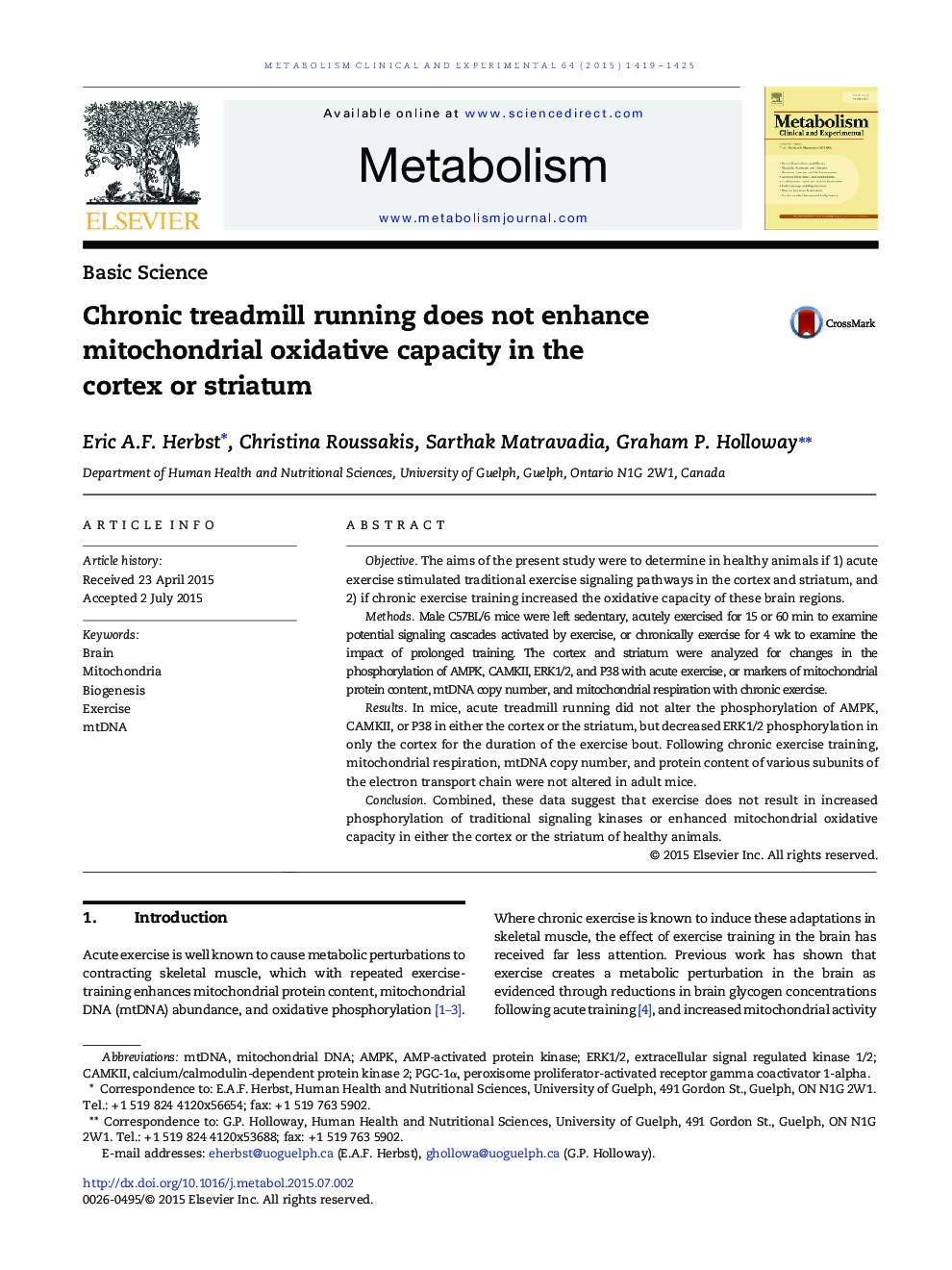| Article ID | Journal | Published Year | Pages | File Type |
|---|---|---|---|---|
| 2805366 | Metabolism | 2015 | 7 Pages |
ObjectiveThe aims of the present study were to determine in healthy animals if 1) acute exercise stimulated traditional exercise signaling pathways in the cortex and striatum, and 2) if chronic exercise training increased the oxidative capacity of these brain regions.MethodsMale C57BL/6 mice were left sedentary, acutely exercised for 15 or 60 min to examine potential signaling cascades activated by exercise, or chronically exercise for 4 wk to examine the impact of prolonged training. The cortex and striatum were analyzed for changes in the phosphorylation of AMPK, CAMKII, ERK1/2, and P38 with acute exercise, or markers of mitochondrial protein content, mtDNA copy number, and mitochondrial respiration with chronic exercise.ResultsIn mice, acute treadmill running did not alter the phosphorylation of AMPK, CAMKII, or P38 in either the cortex or the striatum, but decreased ERK1/2 phosphorylation in only the cortex for the duration of the exercise bout. Following chronic exercise training, mitochondrial respiration, mtDNA copy number, and protein content of various subunits of the electron transport chain were not altered in adult mice.ConclusionCombined, these data suggest that exercise does not result in increased phosphorylation of traditional signaling kinases or enhanced mitochondrial oxidative capacity in either the cortex or the striatum of healthy animals.
